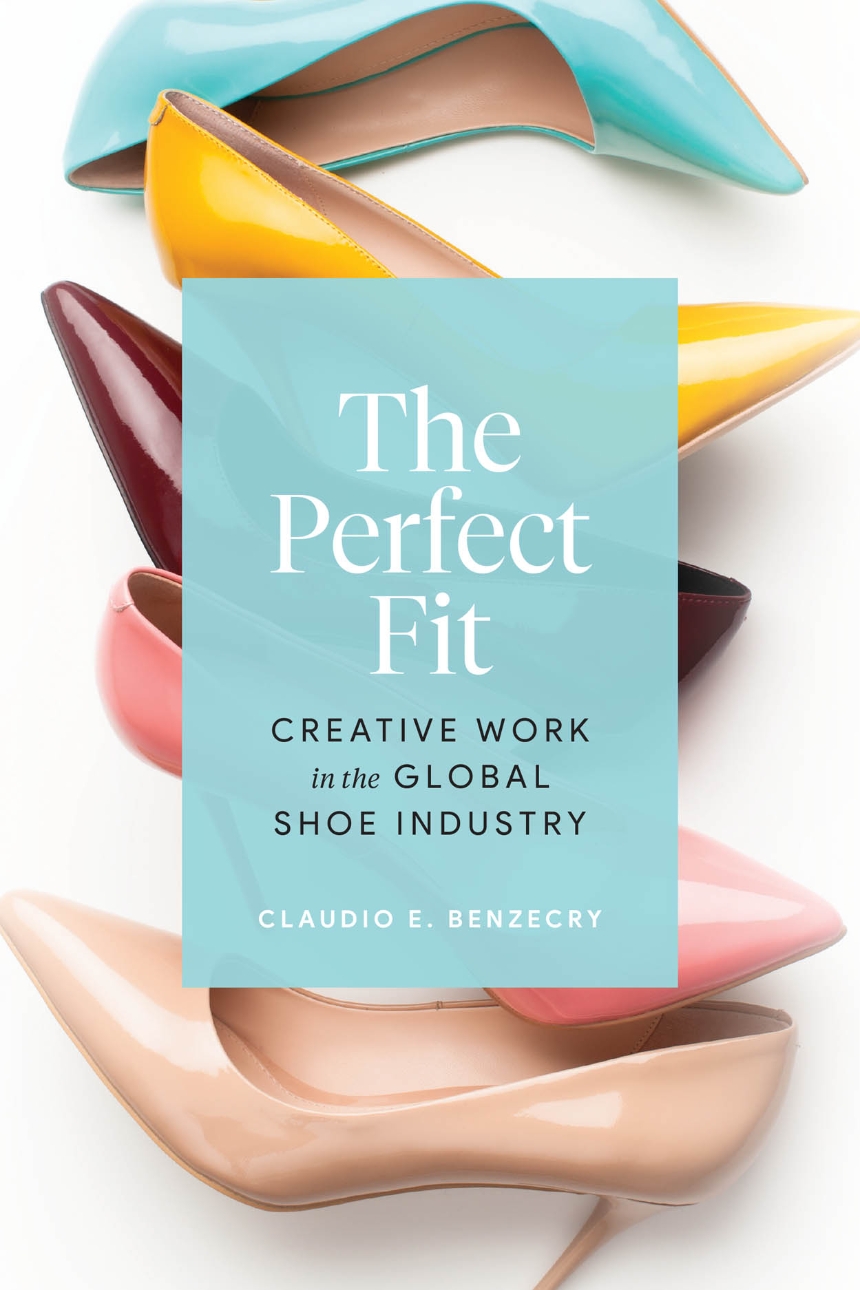The Perfect Fit
Creative Work in the Global Shoe Industry
The Perfect Fit shows us how globalization works through the many people and places involved in making women’s shoes.
We know a lot about how clothing and shoes are made cheaply, but very little about the process when they are made beautifully. In The Perfect Fit, Claudio E. Benzecry looks at the craft that goes into designing shoes for women in the US market, revealing that this creative process takes place on a global scale. Based on unprecedented behind-the-scenes access, The Perfect Fit offers an ethnographic window into the day-to-day life of designers, fit models, and technicians as they put together samples and prototypes, showing how expert work is a complement to and a necessary condition for factory exploitation.
Benzecry looks at the decisions and constraints behind how shoes are designed and developed, from initial inspiration to the mundane work of making sure a size seven stays constant. In doing so, he also fosters an original understanding of how globalization works from the ground up. Drawing on five years of research in New York, China, and Brazil, The Perfect Fit reveals how creative decisions are made, the kinds of expertise involved, and the almost impossible task of keeping the global supply chain humming.
We know a lot about how clothing and shoes are made cheaply, but very little about the process when they are made beautifully. In The Perfect Fit, Claudio E. Benzecry looks at the craft that goes into designing shoes for women in the US market, revealing that this creative process takes place on a global scale. Based on unprecedented behind-the-scenes access, The Perfect Fit offers an ethnographic window into the day-to-day life of designers, fit models, and technicians as they put together samples and prototypes, showing how expert work is a complement to and a necessary condition for factory exploitation.
Benzecry looks at the decisions and constraints behind how shoes are designed and developed, from initial inspiration to the mundane work of making sure a size seven stays constant. In doing so, he also fosters an original understanding of how globalization works from the ground up. Drawing on five years of research in New York, China, and Brazil, The Perfect Fit reveals how creative decisions are made, the kinds of expertise involved, and the almost impossible task of keeping the global supply chain humming.
264 pages | 57 halftones | 6 x 9 | © 2022
Sociology: Formal and Complex Organizations, Occupations, Professions, Work, Sociology of Arts--Leisure, Sports
Reviews
Table of Contents
Preface: The Frailty of Commodity Chains
Chapter 1: From Head to Toe
Part 1: From the Designer’s Point of View
Chapter 2: From “the Global” to “the Girl”
Chapter 3: When Is a Shoe a Shoe?
Part 2: Feet and Fit
Chapter 4: The World at Her Fit: Scale-Making, Uniqueness, and Standardization
Chapter 5: Cinderella on the Pearl River Delta: Who Has the Power to Translate?
Part 3: The Global in the Rearview Mirror
Interlude: A Landscape of Factories
Chapter 6: The Ruins and Rubble of Novo Hamburgo: Skill and Melancholia in a Global Shoe Town
Conclusion: What Did We Learn about Globalization by Looking at Shoes?
Coda: Shoe Is a Gipsy Business
Acknowledgments
Notes
References
Index
Chapter 1: From Head to Toe
Part 1: From the Designer’s Point of View
Chapter 2: From “the Global” to “the Girl”
Chapter 3: When Is a Shoe a Shoe?
Part 2: Feet and Fit
Chapter 4: The World at Her Fit: Scale-Making, Uniqueness, and Standardization
Chapter 5: Cinderella on the Pearl River Delta: Who Has the Power to Translate?
Part 3: The Global in the Rearview Mirror
Interlude: A Landscape of Factories
Chapter 6: The Ruins and Rubble of Novo Hamburgo: Skill and Melancholia in a Global Shoe Town
Conclusion: What Did We Learn about Globalization by Looking at Shoes?
Coda: Shoe Is a Gipsy Business
Acknowledgments
Notes
References
Index
